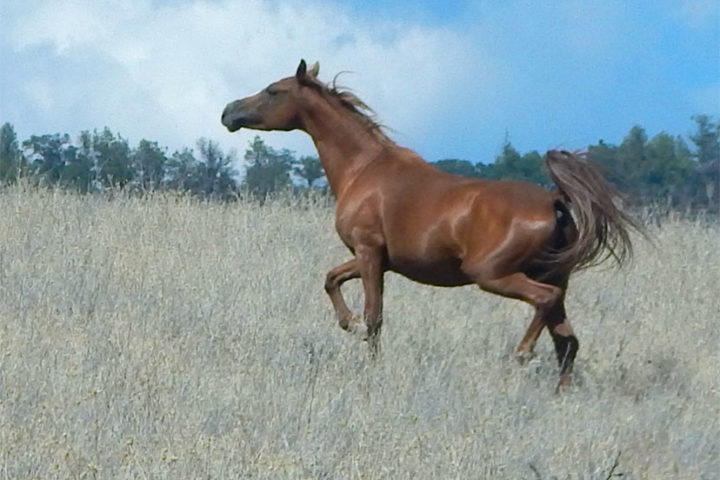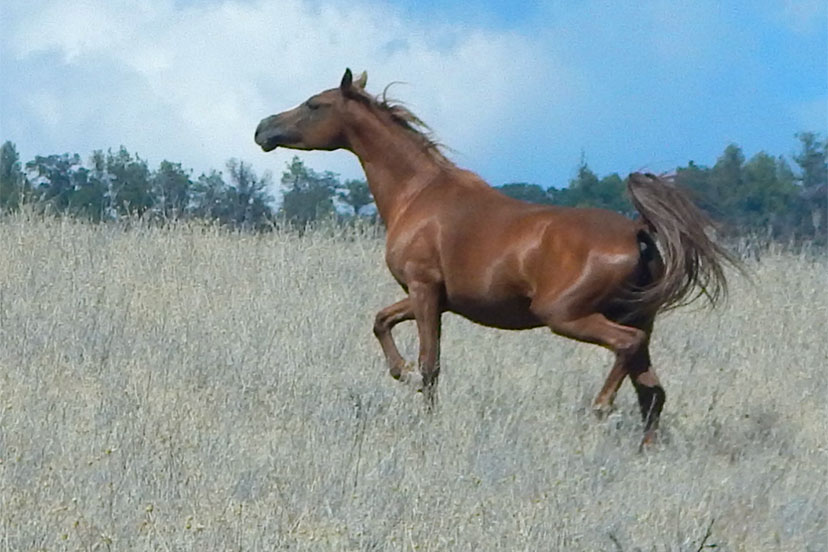Have the wild horses on the Virginia Range in Nevada been converted into a herd of the ‘walking dead’?
A review of natural history shows that humankind have been poor stewards of the American landscape and wildlife. Humans don’t like to assume the blame for their own actions on the landscape, many times blaming nature’s forces for bad stewardship. A good example of this are the catastrophic wildfires that are devastating western forests. And with the destruction of the forests, wildlife, watersheds and fisheries are being devastated via immediate destruction by intense heat, flames and smoke, and finishing off with catastrophic erosion post-wildfire, that silts-in the spawning beds for salmon and trout. And finally, the loss of forests and native plant and grass ground cover, reduces the amount of winter precipitation that can refresh the aquifer; winter rains just runoff with soils into the streams and rivers, and into the sea.
The genesis of these recently evolved catastrophic wildfires is tied to the mismanagement of wildlife; namely cervids (deer, elk, etc.). In California alone, over the past 50-years, the population of deer has dropped by 1.5-million deer. The loss of 1.5-million deer in California is important in that; these now missing deer had been consuming about 2-million tons of annually occurring grass and brush. These ungrazed overabundant fuels across the landscape are now supporting catastrophic wildfire.
Without fuel, there can be no fire, regardless of temperature.

Warmer and longer summers from climate change merely dry these ungrazed grass and brush fuels sooner and keeps them dry longer through the year. According to CAL-FIRE’s handbook, these ‘one-hour class fuels’ are the key wildfire fuels that burn extremely hot, kindling and carrying wildfire to other heavier fuels and structures. Published, peer-reviewed science informs that, a reduction of these fuels by large herbivores (such as wild horses), results in a reduction of both the intensity and frequency of wildfire.
More about herbivory and wildfire reduction can be found here.
Even with the activism by hundreds of donation-funded non-profit activist organizations, many species of flora and fauna in America are approaching the brink of extinction, including the vanishing herds of native species American wild horses, which are the last reservoirs of the remnant genetics of ancient American horse bloodlines.
The empirical evidence in regard to the past 40-years of activism by donation-funded nonprofit organizations, which have benefited from nearly $100-million in total donations, suggests that four decades of activism and millions of dollars in donations have yielded what are arguably the largest roundups of wild horses in history of wild horses since the passing of the 1971 Free-Roaming Wild Burro and Horse Protection Act.
In conjunction with these roundups, the Bureau of Land Management (‘BLM’) along with cooperating donation-funded wild horse non-profit organizations, such as American Wild Horse Campaign (‘AWHC’), and others, have been supporting shooting wild horses full of chemicals like PZP and GonaCon, which cause a host of harmful effects, and rendering wild mares infertile.
In conjunction with the tactic of what may be termed as ‘chemical genocide’ via the use of PZP and GonaCon on wild horses, stallions are castrated and released back onto the range along with mares treated with PZP and/or GonaCon. The result is insidious and very unnatural; wandering bands of non-breeding wildlife.
These actions, by intent, are seriously damaging the genetic diversity of wild horses, resulting in serious genetic erosion and the eventual end of the bloodlines of American wild horses.
One enlightened wild horse advocate, J. Austin Colwell, recently wrote:
“Just today I ended a two-month fundraiser for AWHC a little early… I started it when I was “greener” at this and not fully aware of some of their more repellent policies… and I’m in the process of alerting all of the donors to request refunds of their donations. Sorry – NOT sorry – AWHC, but when you proudly make a statement like this one: ‘The American Wild Horse Campaign has proved its success in the Virginia Range with a large-scale program that has achieved zero population growth in just two years’… let me repeat that: ‘zero population growth in just two years’!… you’ve lost me as a supporter, as a donor, and as an ally …”
The Virginia Range could now arguably be called the ‘The Walking Dead Range’…
All treated horses will soon vanish from the landscape over a 10-15-year period… slowly dying-off on the landscape beyond the public eye, having produced few or no offspring, or defective offspring that have diminished natural immunity as a result of how selective breeding and PZP works on mares. There is a good argument that PZP is a ‘genetic poison’.
And having wild horses ‘slowly’ dying-off works great for the BLM and the grazing industry because the slow death isn’t noticeable to media cameras and the public like the brutal roundups, yet it’s a sure thing!
The activists and non-profit advocates engaged in the use of these genetic poisons argue that it was their only path. But is it really?
The burgeoning land-use and residential-industrial development around the highly compromised and shrinking home range of the wild horses on the Virginia Range is continuing and that makes life for the wild horses that need to live naturally, ‘wild and free’, impossible.
Forcing this terrible situation to continue, and using PZP as a band-aide, is illogical and obtuse. Clearly, these wild horses (and others in similar distress) need to be relocated into an ecologically and economically appropriate remote wilderness area where they can live wild, free and beyond the damaging meddling of humans, as they benefit the ecosystem.
More about PZP can be found here.
There is hope. A natural, holistic plan called ‘Wild Horse Fire Brigade’ has been developed and tested at scale in the wilderness of the Cascade-Siskiyou mountains on the Oregon-California border. There are ecologically and economically appropriate designated wilderness areas where wild horses can be rewilded from holding, and/or relocated from areas where they are currently in conflict with livestock and/or other land-use conflicts.
In such remote and rugged areas, wild horses can resume their naturally evolved roles as keystone herbivores, benefiting the flora and fauna and in equilibrium with the ecosystem. And via their beneficial presence, reducing key wildfire fuels (grass and brush), thereby protecting forests, wildlife, watersheds and fisheries. Learn more about this solution, here.
William E. Simpson II is a naturalist, author, and conservationist living in the Soda Mountain wilderness area among the wild horses that he studies. Learn more at Wild Horse Fire Brigade.

